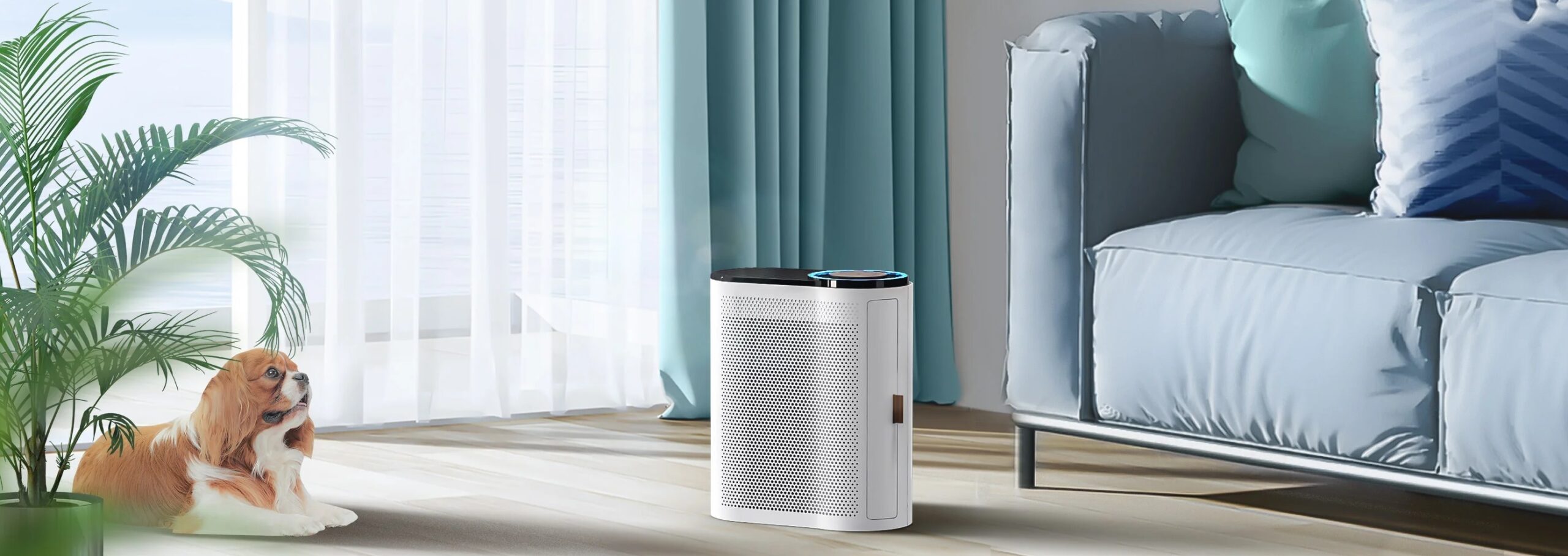
Air purifiers are devices that help remove contaminants from the air in a room. These machines are commonly marketed as being beneficial to allergy sufferers and asthmatics, and at reducing or eliminating second-hand tobacco smoke. The purifiers function by filtering and trapping harmful particles and contaminants, circulating the clean air back into the room.
Here’s how they typically work:
- Use of filters: Most air purifiers use a system of internal fans to pull the air through a series of filters that remove harmful airborne particles like dust, pollen, and bacteria. The air purifier then circulates the purified air back into the room.
- Different types of filters: These can include a HEPA filter (High-Efficiency Particulate Air) capable of removing at least 99.97% of dust, pollen, mold, bacteria, and any airborne particles with a size of 0.3 microns (µm). Other filters might be designed to neutralize or absorb various chemicals, toxins, or odors.
- Ionizing purifiers: Some air purifiers use ionizers—meaning they release negatively charged ions into the air causing pollutants to settle on surfaces, theoretically cleaning the air. However, this technology is sometimes controversial because it may produce ozone, a potentially harmful byproduct.
- UV lights: Certain models use ultraviolet lights to kill viruses, bacteria, and molds that pass through the air purifier. However, they’re not typically effective against non-living allergens or chemical fumes.
- Adsorbents: Some air purifiers also include adsorbent materials (like activated carbon) that can help with odors, fumes, and chemical pollutants.
- Size and room capacity: Air purifiers come in various sizes and designs, with certain models built to clean the air in a single small room and others designed for larger or multiple rooms.
Here we compare or discuss of Top Affordable Air Purifiers of 2023: Breathe Easy for Under $100
Table of Contents
- LEVOIT Air Purifier for Home Allergies Pets Hair in Bedroom
- GermGuardian Air Purifier with HEPA 13 Filter
- LEVOIT Air Purifiers for Bedroom Home
- Instant HEPA Quiet Air Purifier
- LEVOIT Air Purifiers for Home, HEPA Filter for Smoke
- GermGuardian Desktop Air Purifier for Home, H13 HEPA Filter
- OION Technologies B-1000 Permanent Filter Ionic Air Purifier Pro Ionizer
LEVOIT Air Purifiers for Home Allergies Pets Hair in Bedroom
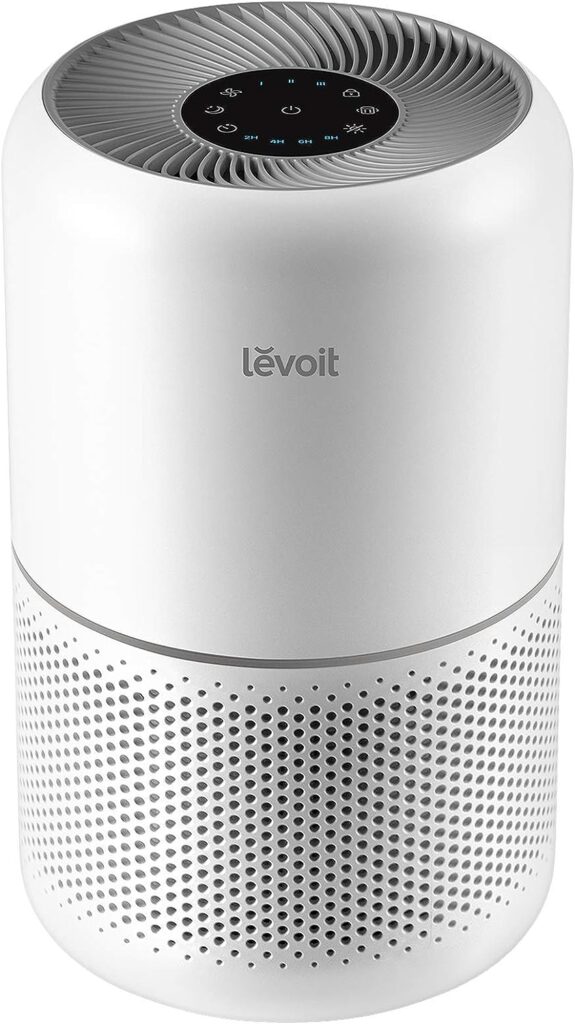
The LEVOIT Core 300 is a popular air purifier, particularly known for its efficiency in cleaning the air and its modern, user-friendly design.
Key Features:
- High-Efficiency Filtration System: The Core 300 typically boasts a 3-part filtration system, which includes:
- A pre-filter for large particles like hair and pet fur.
- A True HEPA filter that captures 99.97% of airborne particles as small as 0.3 microns, including dust, pollen, smoke, and pet dander.
- An activated carbon filter that absorbs household odors, cooking smells, and pet odors.
- Coverage Area: The device is designed to accommodate medium to large living spaces, with the ability to purify the air within rooms of up to approximately 1095 square feet, making it suitable for bedrooms, living rooms, and office spaces.
- Powerful Performance with 45W High Torque Motor: The LEVOIT Core 300’s motor enhances its performance, ensuring efficient air purification while keeping operational noise low. This feature helps the device maintain a quiet environment, particularly important in spaces like bedrooms or study rooms.
- Customizable Filters: One of the features often highlighted in models like the Core 300 is the availability of customized filters to tackle specific needs like toxic gases, pet allergies, and mold, which can be purchased separately.
- User-Friendly Features: The Core 300 often includes elements designed for ease of use, such as:
- Quiet operation, ensuring it doesn’t disturb sleep or work.
- A timer feature for setting operational hours, contributing to energy saving.
- Indicators for filter replacement, ensuring the air purifier operates at its optimum efficiency by signaling when it’s time for a new filter.
- Design and Aesthetics: The LEVOIT Core 300 is often noted for its sleek and modern design, which can seamlessly blend into various home decors. Its compact nature also means it doesn’t take up too much space, making it a practical addition to most rooms.
- Certifications: Look for certifications that indicate the air purifier meets specific safety and performance standards. Common certifications include FCC, CE, and CARB, ensuring it complies with health and environmental safety guidelines.
Pros:
- Efficient 3-Stage Filtration: With a True HEPA filter, it captures 99.97% of dust, pollen, pet dander, smoke, and mold spores, making the environment cleaner and healthier.
- Customizable Filters: The option to use specific filters for different needs (e.g., pet allergies, mold, bacteria) is a huge plus, allowing users to adapt the device to their environments.
- Quiet Operation: The device is known for its quiet functioning, even on higher settings, which is ideal for environments requiring low noise levels, such as bedrooms or study areas.
- User-Friendly Design: Features like timer settings, filter change reminders, and multiple fan speeds make it easy to use and maintain. The compact and modern design is also aesthetically pleasing in most home decors.
- Adequate Coverage for Medium-Sized Rooms: It offers effective coverage for spaces up to 1095 square feet, suitable for most bedrooms, living rooms, or offices.
- Energy Efficient: With its 45W motor, it delivers powerful performance without consuming excessive electricity, a cost-effective feature in the long term.
Cons:
- Initial and Ongoing Cost: While the unit itself is often considered reasonably priced, the cost of replacement filters and the need to replace them regularly can add up over time.
- Limited Features in Basic Model: Some users might find the basic model lacking in advanced features like air quality sensors, auto-adjusting modes, or smart home compatibility that are available in other models or brands.
- May Not Be Suitable for Very Large Spaces: For open-concept living areas or larger homes, you may need multiple units to cover the space adequately.
- Custom Filters Sold Separately: While the option to customize is a plus, the need to purchase specialized filters separately is an additional expense, and they may not always be readily available.
- No Real-Time Air Quality Monitoring: Some users prefer air purifiers with built-in sensors that provide real-time feedback on air quality, a feature that this model may lack.
- Potential for Noise on Higher Settings: While the purifier is generally quiet, every device has different noise levels, and some users might find it louder on high settings, which might be disruptive for some.
Remember, while LEVOIT’s Core 300 model may help alleviate allergies and clean the air of pollutants effectively, maintaining the unit is crucial. Regularly replacing filters and ensuring the device is clean will prolong its life and ensure the air in your home stays clean. Also, consider checking the product warranty and after-sales support policies offered by LEVOIT for this model.
Buy NowGermGuardian Air Purifiers with HEPA 13 Filter
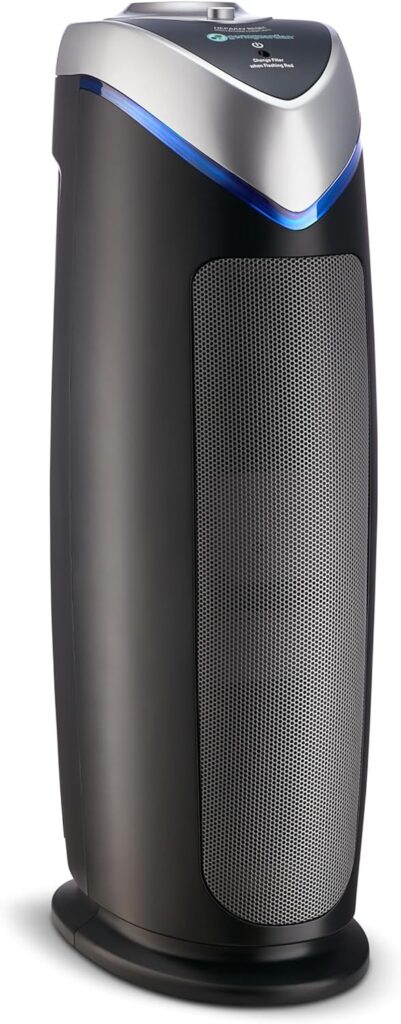
The GermGuardian AC4825E is a popular air purifier known for its effective cleaning properties, and it comes from a line of products by Guardian Technologies, a company well-regarded for its range of air purifying products.
Key Features:
- HEPA 13 Filter: The HEPA 13 filter captures 99.97% of dust and allergens as small as .3 microns such as household dust, pet dander, mold spores, and plant pollens. This level of filtration is crucial for individuals suffering from allergies or asthma as it significantly reduces the irritants in the air that may exacerbate these conditions.
- Room Coverage (743 Sq. Feet in 1 Hour): The AC4825E is capable of purifying the air within a room of up to 743 square feet in one hour, making it suitable for medium to large living spaces. The rate at which it cleans the air (also known as the Clean Air Delivery Rate or CADR) is important when considering the size of the space you need to purify.
- UV-C Light Technology: This GermGuardian model features a UV-C light that works with Titanium Dioxide to reduce airborne bacteria, viruses, germs, and mold spores. The UV-C light is a known disinfectant and can kill or neutralize airborne pathogens, thus enhancing the air cleaning process, particularly during flu season or in the event of a viral outbreak.
- Zero Ozone Verified: The product is advertised as “Zero Ozone Verified,” meaning it doesn’t emit ozone as a by-product of its air purification processes. Ozone can be harmful to health, especially for people with respiratory conditions, so an ozone-free purifier is safer for indoor environments.
- 22-inch Height and Gray Color (AC4825E Model): At 22 inches, the purifier is relatively compact and can fit seamlessly into most room settings without being obtrusive. The gray color is a neutral tone that can blend with various decors.
- 3-speed settings: It typically includes multiple speed settings that allow you to adjust the rate of purification. For instance, you might want a high setting for times when air quality is particularly poor or allergens are more prevalent, and a low setting for continuous, less obtrusive operation.
Pros:
- HEPA Filter Efficiency: The use of a True HEPA filter means it’s highly effective at capturing small particles, such as pollen, dust mites, and other allergens. For anyone with allergies, asthma, or other respiratory conditions, this level of filtration can provide significant relief.
- UV-C Light Technology: The integration of UV-C light offers an extra layer of protection by killing airborne viruses, bacteria, and mold that pass through the system. This feature is especially valuable during flu season or when there’s increased concern about airborne pathogens.
- Multiple Speed Settings: With different speed settings, users can adjust the device according to their current needs, which is particularly useful if you’re sensitive to noise or if you need high-efficiency air cleaning due to poor outdoor air quality or allergies.
- Zero Ozone Emission: Its “Zero Ozone Verified” feature is crucial for health as some air purifiers, particularly those using ionizers, can produce ozone — a lung irritant. People with asthma or other respiratory conditions will find this aspect beneficial.
- Compact and Aesthetically Neutral Design: Its design is space-efficient and relatively neutral, making it easier to fit into various room aesthetics without being obtrusive.
Cons:
- Regular Maintenance and Cost: The need for regular filter replacement adds to the ongoing cost of operating the unit. The UV-C bulb may also need replacing and can be considered an added maintenance expense.
- Noise Level: While having multiple speed settings is beneficial, some users might find the unit noisy, especially on higher settings. This factor is common with many air purifiers and can be disruptive, particularly in quiet settings or during sleep.
- Limited Area Coverage: While the unit is effective for medium-sized rooms, its reach might not suffice for larger spaces or open floor plans. You may need multiple units to cover larger areas effectively.
- Basic Feature Set: While it covers fundamental needs, the GermGuardian AC4825E might lack some of the advanced features found in other air purifiers, such as air quality sensors, auto-adjusting settings, or a detailed display of the current air quality.
- Potential for UV-C Light Malfunction: While the UV-C light is a notable feature, if it malfunctions, users might not notice immediately, leading to a decrease in the unit’s germ-killing effectiveness. Regular checks and maintenance are required to ensure it’s operating correctly.
The GermGuardian AC4825E combines mechanical filtration (via the HEPA filter) and UV-C light sterilization, offering a comprehensive approach to air purification. It is suitable for people who are particularly concerned about viruses and bacteria, beyond the typical dust and allergens.
Buy NowLEVOIT Air Purifiers for Bedroom Home
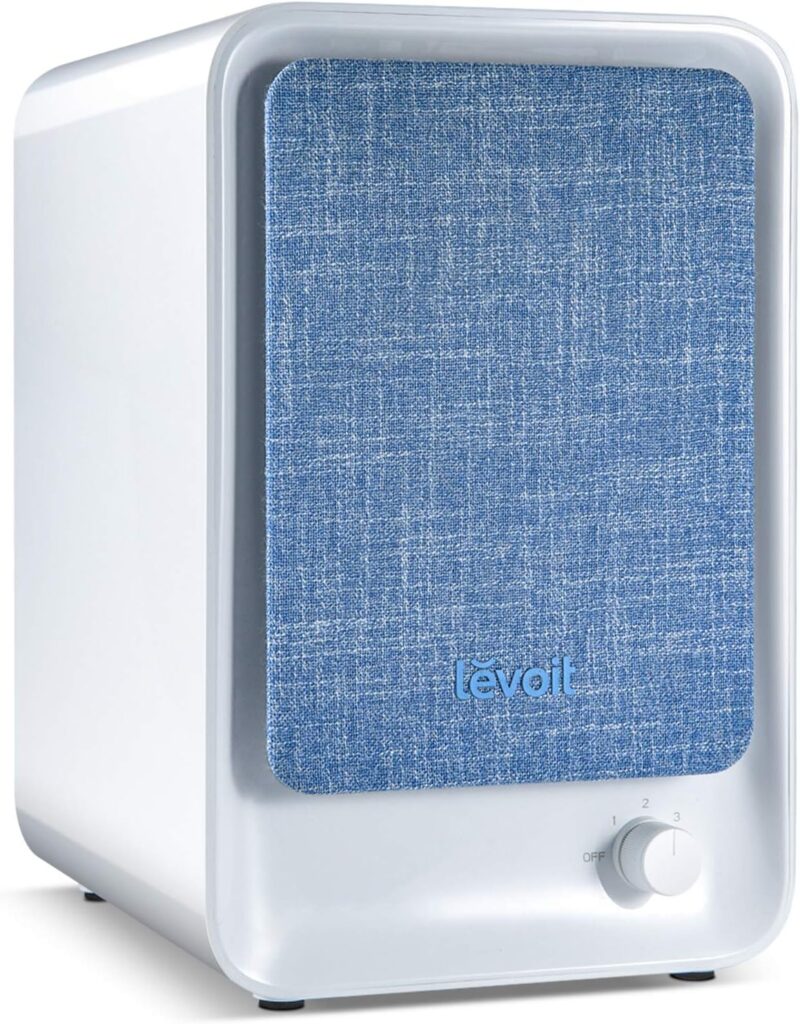
The LEVOIT LV-H126 Air Purifier is designed to cater to smaller spaces, focusing on personal use in areas like bedrooms, home offices, or other individual spaces.
Key Features:
- HEPA Freshener Filter: The LEVOIT LV-H126 uses a HEPA (High-Efficiency Particulate Air) filter, a standard in air purification technology known to trap around 99.97% of particles as small as 0.3 microns. This effectiveness extends to various common allergens and pollutants such as smoke, pollen, dust, pet dander, and certain molds, helping to freshen and improve indoor air quality.
- Designed for Small Rooms: This model is targeted for use in smaller spaces, which is typical for desktop or tabletop air purifiers. Its compact size and efficient design for small-room use make it ideal for personal spaces, providing concentrated air purification without the bulk or energy consumption of larger units.
- Smoke, Allergies, Pet Dander, Pollen, Odor, Dust Remover: The device is marketed to address a comprehensive range of common indoor air pollutants. This wide scope suggests it’s designed to benefit individuals with allergies or those sensitive to particles and odors in their environment, providing more comfortable and healthier indoor air.
- Ozone Free: The “Ozone Free” mark is crucial as some air purifiers use ionizers or UV-C light to kill bacteria and viruses, potentially producing trace amounts of ozone as a byproduct. Ozone, even in small amounts, can be a lung irritant and is concerning for individuals with respiratory issues. By stating it’s ozone-free, LEVOIT ensures that this model is safe for all users, especially those with respiratory sensitivities.
- Quiet Operation: A feature particularly important for devices used in sleeping or working areas, quiet operation means the LEVOIT LV-H126 is likely engineered to produce minimal noise, ensuring it doesn’t disturb sleep or concentration, adding to its suitability for bedrooms or offices.
- Desktop, Office, Table Top Use: Its categorization as suitable for “Desktop” or “Table Top” use emphasizes its compact size and portability, indicating it’s convenient for users who wish to have a personal air purifier close by without occupying too much space.
- Aesthetic (Blue, LV-H126): The specific model number and color (LV-H126, Blue) might be one of several aesthetic options available, allowing customers to choose one that best fits their personal preference or room decor.
Pros:
- Efficient HEPA Filtration: The use of HEPA filtration technology means it can effectively capture up to 99.97% of fine particles, including common allergens like dust, pet dander, and pollen. This thorough filtration improves air quality significantly, especially beneficial for allergy sufferers.
- Compact and Portable: Its small size is ideal for personal spaces, desktops, or nightstands. The compact design makes it portable and convenient to move from room to room, perfect for those who need a purifier in multiple spaces throughout the day.
- Ozone-Free Operation: Being ozone-free ensures it doesn’t emit this harmful byproduct that can irritate the lungs, making it safer for individuals with respiratory conditions and generally healthier for indoor environments.
- Quiet Operation: If it operates quietly, as many LEVOIT models are designed to do, it would be less likely to disturb sleep or work, making it suitable for bedrooms, studies, or offices.
- Aesthetic Options: With different color options or designs, users can select a model that fits their personal style or room décor, adding a personal touch beyond the standard functionality.
Cons:
- Limited Room Coverage: Designed for smaller spaces, this model isn’t suitable for cleaning the air in large rooms or open-concept areas efficiently. Those needing purification in larger spaces may need to consider a model with more substantial coverage.
- Filter Replacement and Maintenance: Regular filter replacements are necessary to maintain optimal functioning, representing an ongoing cost. Finding the right size and model of filters can sometimes be an inconvenience, and neglecting replacements can compromise air cleaning effectiveness.
- Basic Feature Set: Given its size and likely cost-effective design, it may lack advanced features present in larger or more premium models, such as air quality sensors, automatic mode adjustments, or detailed display panels.
- Potential for Limited Odor Removal: While HEPA filters capture particles, they’re not always as effective against odors or gaseous pollutants. Unless it includes an activated carbon layer or equivalent, some smells or chemical vapors might not be fully neutralized.
- Noise Levels at Higher Settings: While generally quiet, some users might find the noise level at the purifier’s higher settings disruptive, especially in very quiet environments. This factor varies between users, with some more sensitive to background noise.
When considering this or any air purifier, it’s also important to consider the ease of maintenance, filter replacement costs, and overall durability of the device. Customer reviews, warranty information, and post-purchase support offered by the company are practical aspects to research to ensure a satisfactory experience with the product.
Buy NowInstant HEPA Quiet Air Purifiers
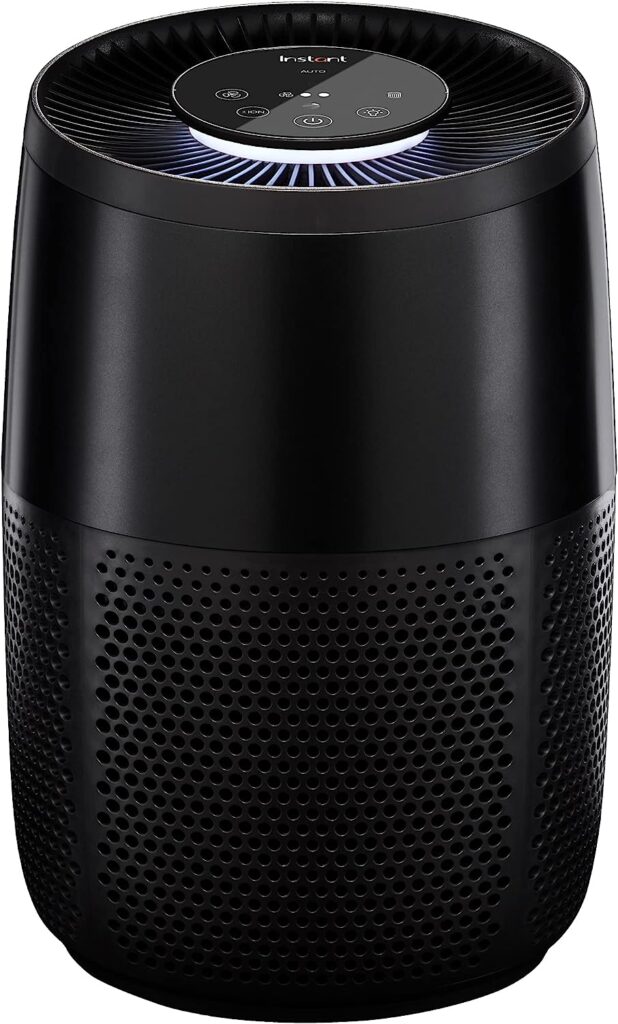
In a world where indoor air quality is increasingly a concern, the need for efficient, quiet, and powerful air purifiers has never been greater. Known for revolutionizing kitchen convenience, the makers of Instant Pot have ventured into the realm of air purification with their Instant HEPA Quiet Air Purifier. This product promises a transformative approach to indoor air quality, suitable for spaces up to 630 square feet. But does it deliver on its promise? Let’s dive into the heart of this machine to see what sets it apart in the bustling market of air purifiers.
Key Features:
- HEPA Filtration: As it’s named a “HEPA Quiet Air Purifier,” this device likely uses a High-Efficiency Particulate Air (HEPA) filter, which is standard for high-quality air purifiers. HEPA filters can trap up to 99.97% of particles as tiny as 0.3 microns, including dust, pollen, smoke, and pet dander, significantly improving indoor air quality.
- Room Coverage up to 630 square feet: The purifier is designed for medium-sized rooms if it covers up to 630 square feet. This size is suitable for many bedrooms, living rooms, and offices, providing efficient air purification within this space range.
- Plasma Ion Technology: The inclusion of Plasma Ion Technology suggests that the purifier may use ions to help neutralize or precipitate airborne pollutants. This technology can assist in removing finer particles or contaminants that might not be captured by the filter, enhancing the overall air purification process. However, it’s essential to verify that this ion technology doesn’t produce significant amounts of ozone, a potential lung irritant.
- Effective Against Multiple Pollutants: The description indicates effectiveness against a variety of common airborne pollutants, including dust, smoke, odors, pollen, and pet hair. This wide range makes it versatile and beneficial for general indoor air quality improvement.
- Designed for Quiet Operation: If advertised as a “Quiet Air Purifier,” the model is likely engineered to minimize noise during operation, which is a valuable feature for spaces where low noise levels are preferred, like bedrooms or offices.
- Aesthetic and Portability (Charcoal Color): The mention of a specific color suggests attention to design and aesthetics, allowing users to match the purifier with their room décor. A charcoal color could offer a sleek, modern look. Also, if it’s from the makers of the Instant Pot, one might infer a certain level of thoughtfulness in design, possibly compact and suitable for various spaces.
Pros:
- Effective HEPA Filtration: With True HEPA filtration, this air purifier can efficiently remove up to 99.97% of airborne particles, including dust, pollen, smoke, and pet dander. This level of filtration is beneficial for allergy sufferers and anyone looking to improve indoor air quality.
- Plasma Ion Technology: This technology can enhance the air purifier’s effectiveness by neutralizing airborne pollutants or making them easier to capture. It can be particularly effective against odors or smaller particles that traditional filters might not trap as efficiently.
- Coverage Area: The stated coverage of up to 630 square feet is relatively large, making this air purifier suitable for larger rooms or areas in the home or office. This is a standout point as many other models are suited for smaller spaces.
- Quiet Operation: As the name suggests, this model emphasizes quiet operation, an essential feature for those using it in bedrooms, quiet spaces, or while sleeping. Low noise levels can significantly impact user satisfaction, especially in constant-use scenarios.
- Design and User Experience: If in line with other Instant brand products, this air purifier likely has a user-friendly design, easy operation, and possibly a pleasing aesthetic that doesn’t intrude on home décor.
- Odor and Smoke Reduction: The combination of HEPA filtration, activated carbon, and plasma ion technology can be effective in reducing household odors and smoke, contributing to a fresher indoor environment.
Cons:
- Cost of Filter Replacements: HEPA filters require periodic replacement to maintain effectiveness, and the costs of these replacements over the product’s lifetime can accumulate. Users should consider these ongoing maintenance costs.
- Size and Portability: While it’s suitable for larger areas, the unit itself might be quite large or heavy. This could be a consideration for those with limited space or those who wish to move the purifier between rooms frequently.
- Uncertainty About Ionizer: Depending on individual sensitivities and specific product configuration, the ionizer function might raise concerns. Ionizers, while effective, can produce trace amounts of ozone. It’s important to verify that any ozone production is within safe levels, especially for those with respiratory conditions or ozone sensitivity.
- Lack of Advanced Features: Depending on the model, it may lack advanced features found in some modern air purifiers, such as smart integration, air quality sensors, or auto-adjusting fan speeds. If these features are important to you, it’s worth confirming their presence or absence.
- Potential Noise at Higher Speeds: While advertised as quiet, some users might find the noise level at higher fan speeds less tolerable. This variance is standard with many air purifiers, but it’s worth noting if the purifier is intended for use during sleep or in quiet environments.
- Durability and Quality Control: As with any appliance, there could be issues with durability or inconsistent quality, depending on production batches. It’s advisable to check warranty conditions and recent customer feedback regarding these aspects.
The Instant HEPA Quiet Air Purifier appears to be a testament to what happens when innovative technology is guided by user-centric design and convenience. From its sophisticated filtration system to the tranquility of its operation, it’s more than a machine—it’s an enhancement of your indoor living space. While it’s always critical to consider your specific needs and do thorough research, this new offering from the makers of Instant Pot stands as a compelling option for those looking to breathe easier in their homes or offices. As our understanding of indoor air quality evolves, it’s reassuring to see products adapting with a keen sense of what users need and want. Indeed, cleaner air is just a breath away.
Buy NowLEVOIT Air Purifiers for Home, HEPA Filter for Smoke
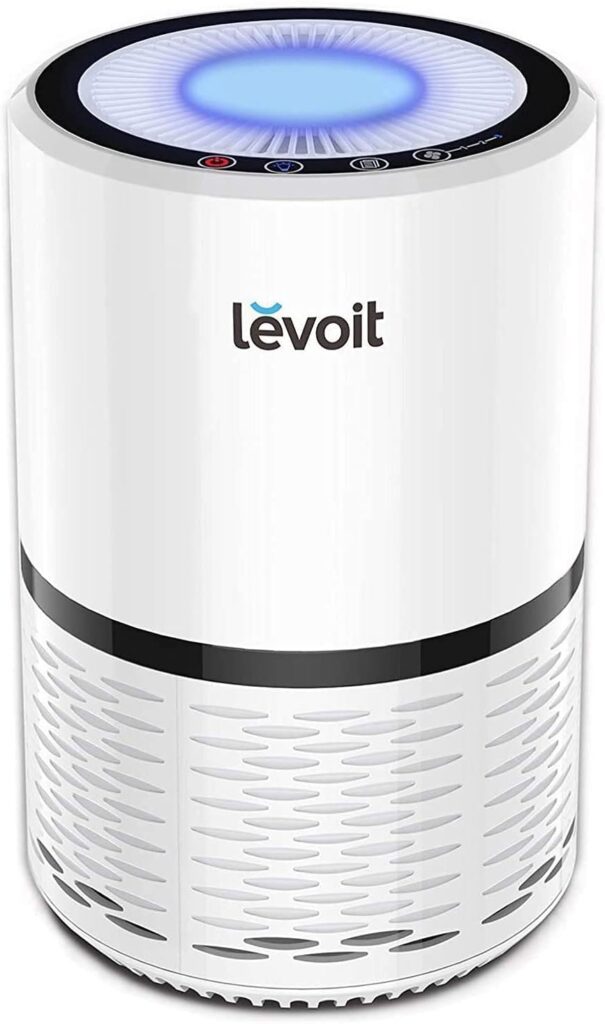
LEVOIT air purifiers are popular home appliances known for their efficiency in improving indoor air quality. The LEVOIT’s HEPA air purifiers designed for use in home environments like bedrooms or offices.
Key Features:
- HEPA Filter Technology: LEVOIT air purifiers typically feature a True HEPA filter, which is essential for capturing 99.97% of airborne particles as small as 0.3 microns. This includes various pollutants such as smoke, dust, pollen, and pet dander. The efficiency of HEPA filters makes them very popular for people suffering from allergies and respiratory conditions.
- Ozone Free: Some air purifiers use ionizers or UV lights, which can produce trace amounts of ozone – a potential lung irritant. LEVOIT air purifiers are advertised as ozone-free, focusing on mechanical filtration methods (like HEPA) instead of electronic methods that might generate ozone. This makes these purifiers safer for indoor environments, especially for those sensitive to ozone.
- Activated Carbon Filter: Besides the HEPA filter, these air purifiers often have an activated carbon filter to help remove odors from the air. This can include smells from cooking, smoking, pets, and more, helping to keep the indoor air fresh.
- Optional Night Light: Some models come with an optional night light, a feature that can be particularly useful when the unit is used in bedrooms. It can provide a soothing light source at night without being overly bright or disruptive.
- Quiet Operation: Many users prefer air purifiers with quiet operation, especially for use during sleep. LEVOIT models are often designed to be unobtrusive and quiet, making them suitable for bedrooms, baby rooms, and offices.
- Multiple Fan Speeds and Settings: Users can typically adjust the fan speed, allowing for more rapid air purification when needed or quieter operation at other times. Some models may also have specific modes for different conditions, such as “sleep” or “auto” modes, which adjust the settings based on the environment’s current air quality.
- Size and Portability: The model you’re referring to appears to be designed for convenience and portability, suitable for different rooms in a home or office. They are generally not very large, making it easy to move from one room to another or transport to different locations.
- Maintenance: Regular maintenance of these units generally involves replacing the air filters periodically to maintain optimal air-cleaning performance. The frequency of change depends on the air quality in your area and the usage, but the manufacturer typically provides clear guidelines and reminders for this.
Pros:
- Efficient Filtration: With True HEPA filters, these purifiers can trap up to 99.97% of fine particles, making them highly effective at reducing allergens, including pollen, dust, pet dander, and more. This can be particularly beneficial for allergy sufferers.
- Ozone-Free: LEVOIT air purifiers do not use UV-C light or ionizers, which are known to produce trace amounts of ozone. This is an important consideration for people with respiratory issues or those concerned about ozone.
- Quiet Operation: Many models are designed for low noise levels, making them suitable for spaces like bedrooms, study rooms, and offices. This means they can run overnight or throughout the day without disturbing sleep or concentration.
- Odor Elimination: The activated carbon filters present in these devices are good at removing common household odors, which can make the environment more pleasant for people sensitive to smells.
- Design and Features: These air purifiers often have a sleek design that fits well into modern home decor. Additional features like night lights or multiple fan speeds add to their convenience and user-friendliness.
- Suitable for Small to Medium Spaces: They are ideal for purifying air in small to medium-sized rooms, offering flexibility and efficiency for personal spaces.
Cons:
- Filter Replacement Cost: Over time, you’ll need to replace the HEPA and activated carbon filters, which come with a recurring cost. Depending on usage, the frequency of replacement varies, and it might be considered somewhat frequent for users in highly polluted environments.
- Not for Large Spaces: Standard LEVOIT air purifiers might not be as effective in large open areas or entire homes. They are designed for specific-sized rooms, and their efficiency drops if placed in a space larger than they are rated for.
- Basic Functionality: While they perform their core function well, some users might seek advanced features like air quality sensors, automatic adjustment settings, or detailed visual air quality feedback, which might not be available in all models.
- Noise at Higher Settings: Although generally quiet, these air purifiers, like others, can produce more noise at higher fan speeds, which might be noticeable and possibly disturbing for some users.
- Occasional Quality Control Issues: As with many electronic products, there might be occasional issues with specific units related to manufacturing, requiring replacements or refunds. However, the prevalence of this issue would need to be confirmed by recent customer reviews and feedback.
When choosing an air purifier, consider the size of the room you want to purify and make sure the purifier is capable of handling that square footage. Also, consider any specific needs such as sensitivity to noise, concerns about ozone, special health concerns (like asthma or allergies), and the cost of replacement filters. Be sure to check the latest user reviews and manufacturer information to make an informed decision.
Buy NowGermGuardian Desktop Air Purifier for Home, H13 HEPA Filter
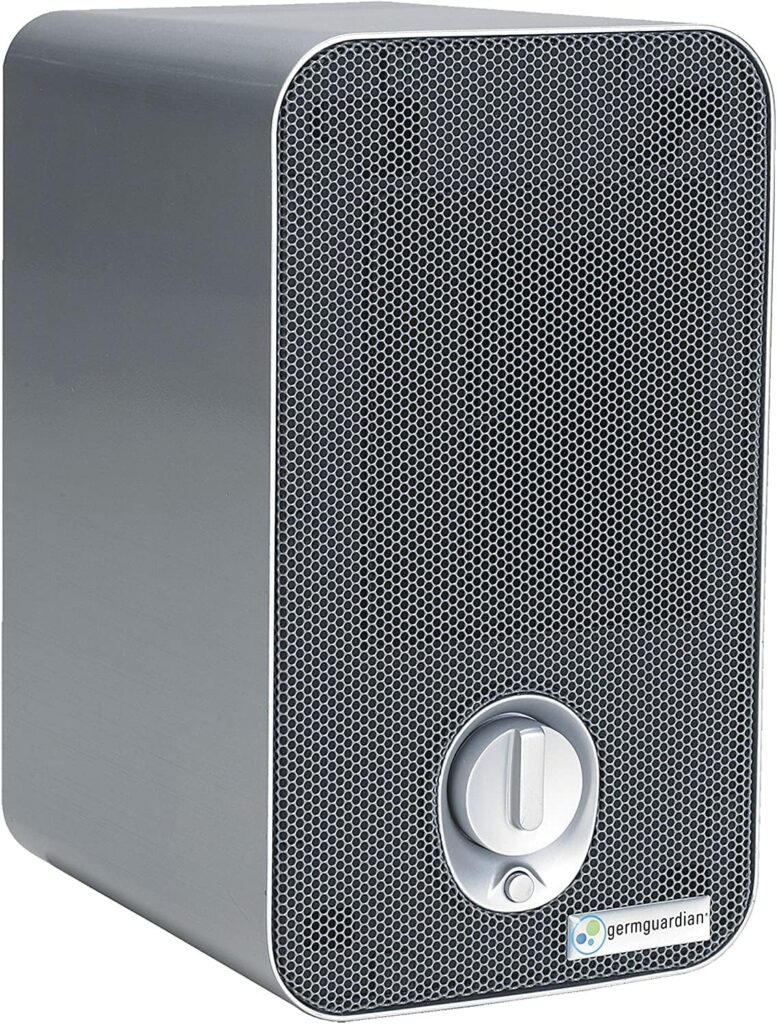
The GermGuardian AC4100 is a compact desktop air purifier that combines multiple cleaning technologies, including a HEPA filter and UV-C light, to improve indoor air quality.
Key Features:
- HEPA Filtration: The GermGuardian AC4100 includes an H13 HEPA filter, which is designed to capture 99.97% of airborne particles as small as 0.3 microns. This includes common allergens like dust mites, pollen, mold spores, and pet dander.
- UV-C Light Technology: This model features a UV-C light that works to kill airborne viruses and bacteria by damaging their DNA. This technology is used in various environments, such as hospitals, to help sanitize the air.
- Activated Carbon Filter: The AC4100 also has an activated carbon layer that helps reduce common household odors, potentially improving the overall smell and freshness of a room.
- Compact Size: With its 11-inch height, this air purifier is designed for use on desktops or other small surfaces, making it suitable for personal spaces, small bedrooms, or office environments.
- 3-Speed Settings: This device comes with three speed settings, allowing you to adjust the rate of purification based on your current needs. This can range from quiet operation to a higher, more powerful setting.
Pros:
- Multilayer Air Purification: The combination of HEPA filtration, UV-C light, and an activated carbon layer offers a comprehensive approach to air purification, targeting particles, odors, and microbial contaminants.
- Space-Saving Design: Its compact size makes it ideal for use in areas where space is limited, and it can easily be placed on a desk or nightstand.
- UV-C Technology for Germ Reduction: The inclusion of UV-C light provides an extra layer of protection by potentially neutralizing harmful microbes in the air, which can be especially reassuring during flu season or in the presence of individuals with weaker immune systems.
- Ease of Use: The simplicity of design and straightforward controls make this product user-friendly, requiring little setup or adjustment.
Cons:
- Area Coverage: Given its size, the AC4100 is best suited for small spaces. If you’re looking to purify air in larger rooms, you may need a larger unit or multiple air purifiers to achieve the same effectiveness.
- Filter Replacement Costs: The need for regular filter replacements to maintain optimal functioning can lead to additional costs over time. The lifespan of the filters can vary based on usage and air quality.
- Noise Level: While having multiple speed settings allows for a quieter operation at the lowest setting, some users might find the unit noisy, especially on the highest setting.
- Limited Advanced Features: The AC4100, designed for basic operation, might lack some of the advanced features seen in higher-end models, such as air quality indicators, auto-adjusting fan speeds, or smart home compatibility.
- Concerns About UV-C Light: There’s some debate about the effectiveness of UV-C light in home air purifiers versus commercial applications, as well as concerns about potential ozone production. It’s important to ensure that the device meets safety standards and understand the implications of UV use in a residential setting.
When considering this or any air purifier, it’s important to assess your specific needs, such as room size, desired features, and the particular contaminants you wish to target, to determine if the product aligns with your requirements. Also, always consider recent consumer reviews and product updates as these can provide current insights into product performance and customer satisfaction.
Buy NowOION Technologies B-1000 Permanent Filter Ionic Air Purifier Pro Ionizer

The OION Technologies B-1000 is an ionic air purifier that uses ionization and UV-C light technology to purify the air. Unlike traditional air purifiers with HEPA filters that physically trap particles, ionizers work by releasing negatively charged ions that attract positively charged airborne particles, causing them to clump together and fall out of the air or be attracted to surfaces.
Key Features:
- Ionic Air Purification: Instead of using replaceable filters, the OION B-1000 releases ions that attract and neutralize airborne particles like dust, allergens, and mold. This can contribute to cleaner air, although it doesn’t remove particles from the room. They settle on surfaces and can be cleaned by dusting or vacuuming.
- UV-C Light: This feature uses ultraviolet light intended to kill or deactivate microorganisms, adding a layer of germicidal protection and helping reduce the spread of bacteria and viruses.
- Electrostatic Filtration: The unit may also include a type of electrostatic collector to attract charged particles, providing a way to physically remove some contaminants from the air without requiring replaceable filters.
- Quiet Operation: Ionic air purifiers like this one tend to operate quietly, making them suitable for environments where minimal noise is preferable, such as bedrooms or offices.
- Low Maintenance: Without traditional filters to replace, the main maintenance requirement for this type of air purifier is regular cleaning of the collection plate (if available) and the interior as instructed by the manufacturer.
Pros:
- Low Operating Costs: Because it doesn’t rely on traditional filters, there’s no need to purchase replacement filters, which can result in significant savings over time.
- Quiet Operation: The lack of a noisy fan or motor makes ionic air purifiers very quiet, a benefit when used in spaces where noise could be disruptive.
- Space-Saving Design: Models like the B-1000 are often compact and unobtrusive, making them suitable for smaller spaces where a larger air purifier would be impractical.
- UV-C Sanitization: The UV-C light can help reduce germs in the air, potentially decreasing the likelihood of illness or mold growth.
Cons:
- Ionization Controversy: There’s ongoing debate about the health implications of ionization in air purifiers, particularly concerning the production of ozone. While these devices are designed to be safe, some people may be sensitive to ozone, and it’s essential to use the unit according to manufacturer guidelines.
- Particle Removal: While the device causes particles to fall out of suspension in the air, it doesn’t remove them from the room. Regular cleaning is necessary to prevent the resettling of particles.
- Effectiveness against Odors: Ionizers are generally less effective than activated carbon filters in removing odors from the air. If odor removal is a priority, this might not be the most effective solution.
- Lack of Advanced Features: Depending on the model, there might be a lack of features like air quality sensors, adjustable fan speeds, or smart device compatibility that are available in other types of air purifiers.
When considering this product, it’s important to align your expectations with what an ionizer can do compared to traditional air purifiers. It’s also crucial to verify current user reviews and product details, as these can offer insights into the unit’s performance, maintenance needs, and user satisfaction levels.
Buy NowHow air purifiers work: the basic mechanism.
Air purifiers work by moving air through filters that capture harmful airborne particles like dust, pollen, pet dander, mold spores, and bacteria. The basic mechanism involves drawing in air, passing it through a series of filters, and then expelling the purified air back into the room.
Here’s a more detailed look at the process:
- Fan or air circulation system: Most air purifiers use a system of fans or a blower to pull in air from a room. The air is then circulated through the unit. Some air purifiers operate very quietly, while others might produce a low-level noise, similar to a fan or air conditioning unit.
- Pre-filter: The first line of defense in many air purifiers is a pre-filter, which captures larger particles like hair and large dust particles. This stage helps protect finer filters from clogging with these larger particles and extends the life of the main filter. In many models, pre-filters are washable or vacuumable.
- Main filter: The most common type of main filter is the HEPA (High-Efficiency Particulate Air) filter, which captures 99.97% of particles as small as 0.3 microns. This filter traps smaller particles like dust, pollen, pet dander, and mold spores, and is a standard for high-quality air purifiers.
- Additional filters or technologies: Many air purifiers also include additional filtering technologies:
- Activated carbon filters absorb gases, odors, and chemical toxins. The carbon particles in these filters chemically bind to gas molecules and remove them from the air.
- UV-C light can kill bacteria, viruses, and other microbes by damaging their DNA. It’s often used in combination with filters rather than as a standalone solution because it doesn’t trap particles.
- Ionizers emit negative ions, causing pollutants to stick together and become heavy enough to fall out of the air or stick to surfaces. Some ionizers produce ozone, which has its health concerns.
- Ozone generators are a type of air purifier that intentionally produces ozone, which reacts with certain pollutants to neutralize them. However, ozone is a lung irritant and can be harmful to health, so these are not recommended for general use, especially in residential settings.
- Clean air release: After the air passes through these filters, the clean air is circulated back into the room, usually through a vent. The process repeats several times an hour, continually reducing the number of airborne contaminants.
It’s important to note that the effectiveness of air purifiers in removing harmful particles varies depending on the specific technology used, the unit’s size, the room size, how well the room is sealed, and how often the air purifier’s filters are changed. Regular maintenance and proper use, as per the manufacturer’s instructions, are crucial for the unit to function effectively.
Benefits of Using an Air Purifier
Using an air purifier can have several benefits, particularly in indoor environments where air quality is compromised due to pollutants, allergens, or other harmful particles.
Here are some of the key benefits:
- Allergy Relief: Air purifiers help reduce the concentration of airborne allergens, which are common triggers for allergies and asthma. By trapping or neutralizing pollen, dust, pet dander, and other allergens, these devices can alleviate allergy symptoms for many individuals.
- Smoke and Odor Removal: Smoke from cigarettes, cooking, and external sources like wildfires can contain harmful particles. Air purifiers with activated carbon filters can absorb smoke and associated odors, making the indoor environment more pleasant and healthier.
- Support for Respiratory Health: By continually cycling the air and reducing the concentration of pollutants that can irritate the respiratory system, air purifiers can contribute to healthier breathing environments, particularly for individuals with respiratory conditions, the elderly, and children.
- Reducing Airborne Diseases: Certain models of air purifiers are effective at capturing and neutralizing bacteria and viruses. While they are not a standalone solution for disease prevention, they can be part of a broader approach to reduce the spread of illnesses, especially in communal or densely populated settings.
- Elimination of Harmful Chemicals: Volatile organic compounds (VOCs) are emitted by a variety of household products, building materials, and furniture. They can have short and long-term health effects. Air purifiers equipped with the appropriate filters can reduce the concentration of VOCs in a room.
- Improved Sleep: Better air quality can improve sleep quality by alleviating congestion, reducing potential allergens, and creating a more comfortable environment conducive to good sleep.
- Overall Well-being: Cleaner air means a healthier environment for all individuals, potentially leading to overall improvements in well-being. This can be particularly noticeable for people who suffer from health issues related to air quality.
- Reducing Stress and Enhancing Mood: Breathing clean air can also have a psychological benefit. Knowing that you’re taking care of your living environment can reduce stress and enhance mood, contributing to overall mental health.
It’s important to note that while air purifiers can significantly contribute to a healthier indoor environment, they should be part of a holistic approach to indoor air quality. This approach includes proper ventilation, regular cleaning, maintaining optimal humidity, and minimizing the use of products that emit harmful chemicals. Also, the effectiveness of an air purifier depends on its proper use and maintenance, including regular filter changes.
Choosing the Right Air Purifier
Choosing the right air purifier depends on several factors, including your specific needs, the size of the space, and the types of pollutants you need to address.
Here’s a guide to help you make an informed decision:
- Understand Your Needs:
- Allergies: If you have allergies, you’ll want an air purifier with a HEPA filter, which is designed to capture 99.97% of airborne allergens.
- Asthma or chemical sensitivities: If you’re sensitive to gases and odors, you might need an air purifier with substantial amounts of activated carbon to absorb gases and odors.
- General air quality: If you’re concerned with general indoor air quality, a combination of HEPA and carbon filters usually works well.
- Room Size: Measure the room’s square footage where you’ll use the purifier. Air purifiers are designed to handle specific room sizes. Check the manufacturer’s specifications to ensure the unit is suitable for your space to effectively clean the air.
- Clean Air Delivery Rate (CADR): CADR is a measure of how quickly the air purifier can deliver clean air. It’s measured in cubic feet per minute (CFM). A higher CADR rating means the purifier can clean the air more quickly and efficiently.
- Filter Types:
- HEPA (High-Efficiency Particulate Air): Captures small particles such as dust, pollen, and most allergens.
- Activated Carbon: Absorbs odors and gases, including VOCs (volatile organic compounds).
- Pre-filters: Capture large particles, helping to extend the life of the main filter.
- UV-C Light: Kills bacteria and viruses by using ultraviolet light.
- Ionizers: Release ions to help particles clump together, making them easier to capture. Note that some ionizers produce ozone, which can be a lung irritant.
- Filter Replacement and Maintenance: Consider the cost and frequency of filter replacements. Some filters are washable while others require periodic replacement. Regular maintenance is crucial for the effectiveness of your air purifier.
- Noise Level: Depending on where you plan to use the purifier, the noise level might be an important consideration. Look for models that have a quiet mode or low noise levels, especially for use in bedrooms.
- Energy Consumption: Like any appliance, air purifiers use electricity. You might want to look for those with ENERGY STAR ratings for energy efficiency.
- Additional Features: Some air purifiers come with extra features like air quality sensors, auto mode, night mode, Wi-Fi connectivity, or remote control. While these might add convenience, consider whether you truly need these features and if they justify any additional cost.
- Budget: Air purifiers come in a range of prices. Determine your budget, keeping in mind that you might also need to pay for ongoing costs like filter replacements and electricity.
- Brand Reputation and Reviews: Consider the reputation of the brand and check customer reviews and ratings. Look for products with good warranties and responsive customer service.
By considering these factors, you can choose an air purifier that best suits your needs, ensuring that you and your household breathe cleaner air. Remember, no single air purifier is the best choice for everyone, so personal needs and preferences are crucial in your decision.
# # # # # # #
In conclusion, investing in an air purifier can significantly enhance the quality of indoor air, contributing to better overall health, particularly for individuals with allergies, respiratory conditions, or sensitivities to airborne particles. However, choosing the right air purifier requires careful consideration of various factors, including the specific needs of the user, room size, types of filters, maintenance, noise levels, energy consumption, and budget.
It’s important to remember that while air purifiers can play a crucial role in health and well-being by reducing the concentration of pollutants in indoor environments, they are most effective when used as part of a comprehensive approach to indoor air quality. This approach includes regular cleaning, proper ventilation, controlling humidity, and minimizing the use of products that emit harmful chemicals.
Furthermore, consumers should be mindful of the ongoing costs associated with maintaining air purifiers, such as filter replacements and electricity usage, and consider these when making a purchase. By making an informed decision, individuals can create a healthier, more comfortable indoor environment for themselves and their families, potentially reducing the risk of health issues associated with poor air quality and creating a more pleasant living space.
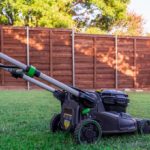
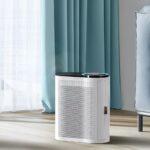
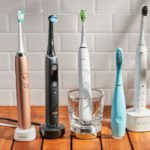
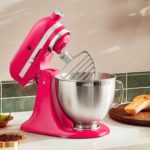
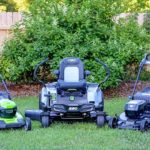
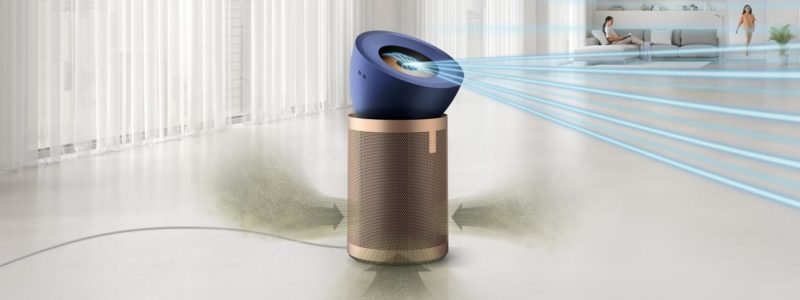
No Comments yet!